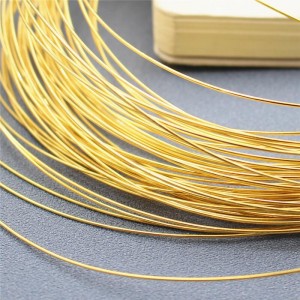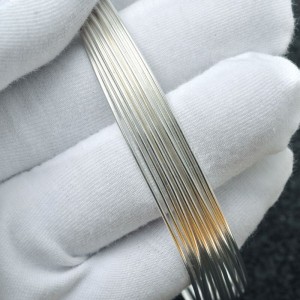In choosing the right type of wire for a project, there are a number of important considerations. Based on the amperage load and application, the electrician needs to determine the appropriate gauge of wire to use, as well as the type of metal wire to use. Beyond choosing between aluminum or copper, the wiring expert will understand the difference between stranded and solid wire and will choose the appropriate wire core to use for their chosen project.
How we choose solid or stranded cables?
The best option for you hinges on the nuances of your particular situation. Let's take a look at the differences between the two types of cables and examine instances where one will function better than the other.
Stranded cable is a type of cable where the wires inside the cables are made up of multiple smaller wires constructed together. Instead of one solid copper wire like solid cable, stranded cable has multiple copper strands that form one wire.
Solid cable is built with one strand or the core of a wire that has non-conductive material for insulation. This type of cable is used for home electrical wiring, wiring for breadboards and other situations where wires are not required to be constantly flexed.


When to use stranded?
When patching from wall to computer or inside a network rack from patch' panel to switch.
Advantage of stranded?
Flexibility: With more strands comes an increase in, flexibility allowing the cable to be manipulated many times without worry about damage.
Stranded cables are easier to route in comparison to solid cables. They are also extremely flexible. Stranded cables can withstand an incredible amount of vibrations and flexing without fatiguing and eventually breaking. As a result, you won't have to replace your stranded cables as often as will be necessary with solid cables.
Negative of stranded?
The thin strands can be stretched and break if used for backbone network installation.
If looking for the cheapest solution around, stranded cable is more expensive than its solid counterpart.
When to use solid?
Perfect for punching down keystone jacks and patch, panels due to the IDC style Blocks. Solid cable is best for backbone network installations.
Advantage of solid?
Strength; Solid cable is extremely strong and can hold up during long cable runs
For network backbone installations.
Cost is significantly cheaper than stranded cabling.
As single, thick strands of cable, they are quite resistant to threats and very easy to produce. Solid cables also have a much more compact diameter compared to stranded cables. Yet this reduced size does not reduce the current carrying ability of solid cables. Add in the fact that solid cables are not as prone to failure as a result of corrosion
and it is easy to see why they are held in high regard.
Negative of solid?
However, with this strength, comes brittleness. Continued manipulation of the cable can cause the conductors to bend and break.
Post time: Oct-30-2020
